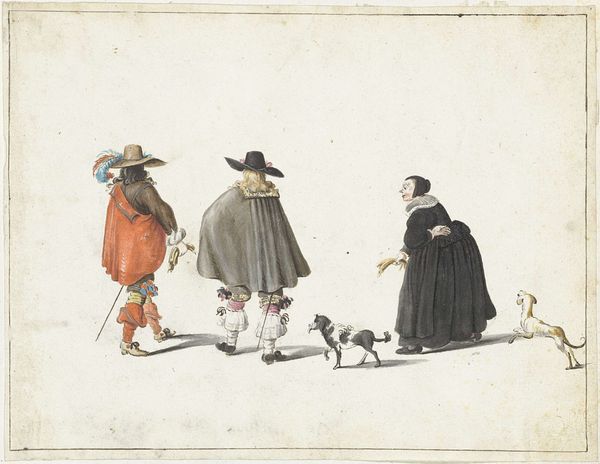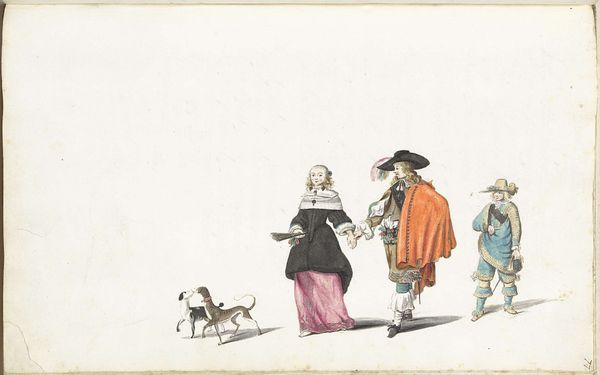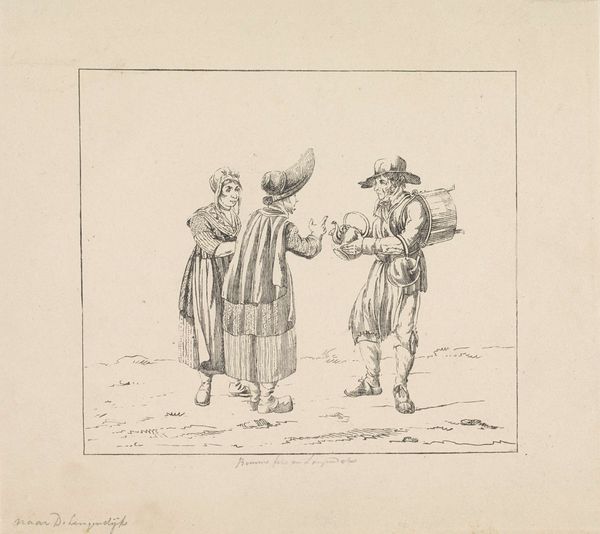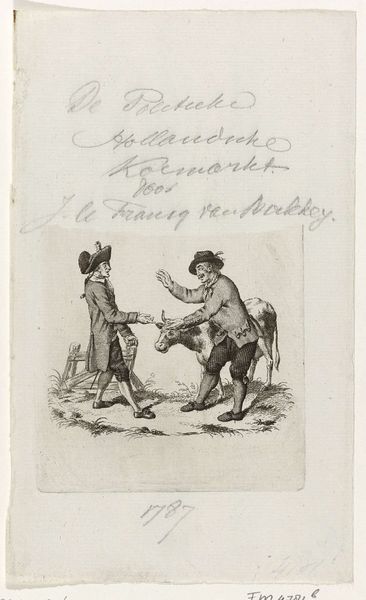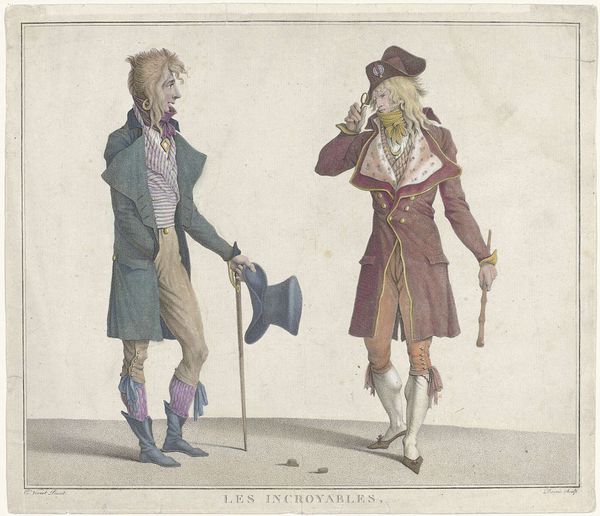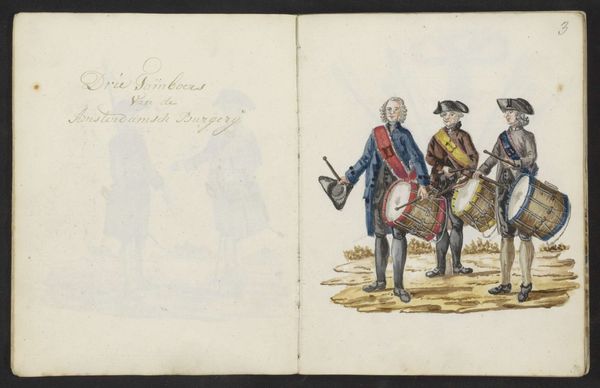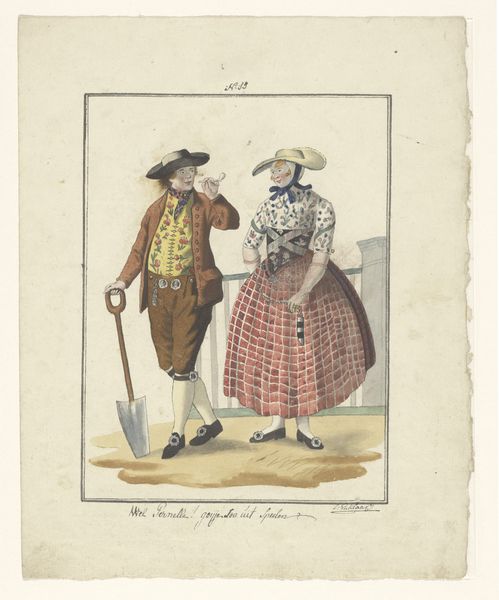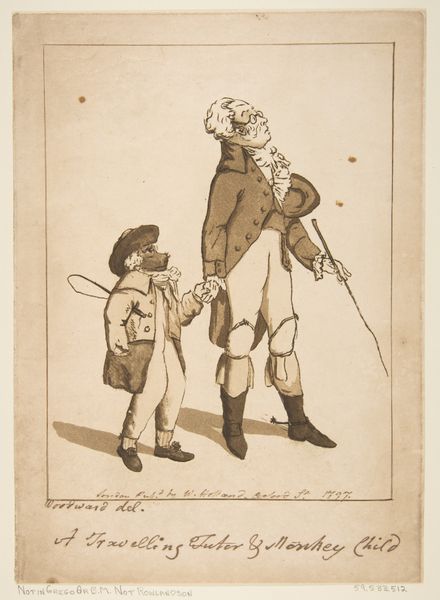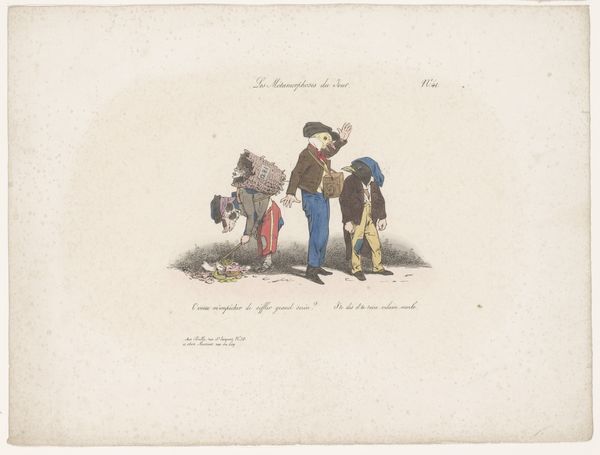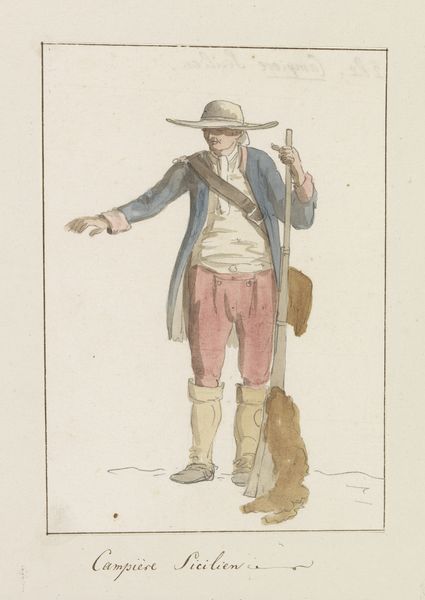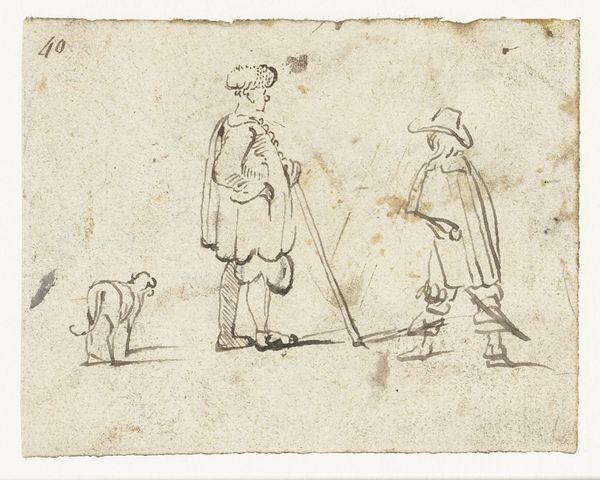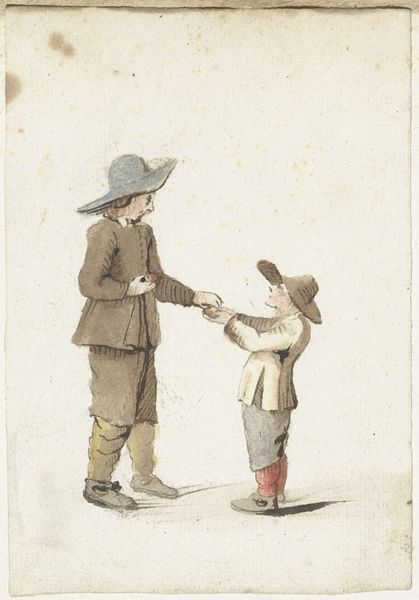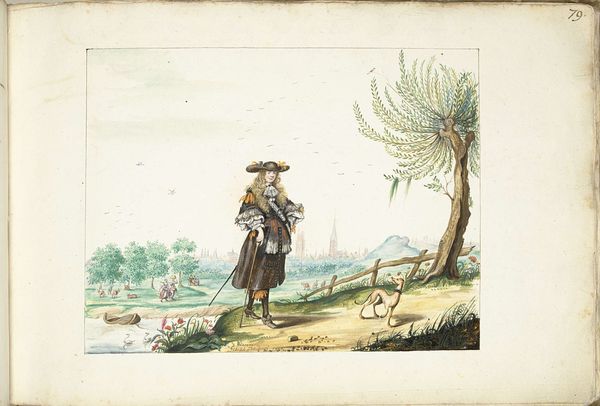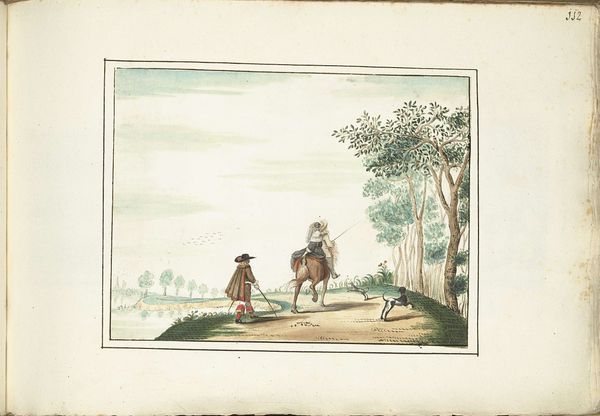
drawing, paper, watercolor
#
portrait
#
drawing
#
dutch-golden-age
#
figuration
#
paper
#
watercolor
#
coloured pencil
#
genre-painting
#
watercolor
Dimensions: height 170 mm, width 200 mm, height 313 mm, width 204 mm
Copyright: Rijks Museum: Open Domain
Editor: Here we have "Two Gentlemen Conversing" by Gesina ter Borch, created in 1654 using watercolor on paper. It’s currently held at the Rijksmuseum. I’m struck by the delicate linework, and how despite the minimal color palette, she’s captured such distinctive details in their clothing. What do you see as the most compelling formal aspects of this piece? Curator: The strength of this work lies in its elegant economy of means. Observe the almost calligraphic quality of the lines, especially in rendering the intricate details of the lace and the folds of fabric. Ter Borch uses hatching and cross-hatching quite deliberately to model form and to suggest texture, all while maintaining a flattened picture plane. Consider, too, how the blank space contributes to a sense of airiness. Editor: That’s a great point about the negative space; it really keeps the eye focused on the figures and their interaction. The composition is quite simple, yet somehow engaging. What can you tell me about the perspective? Curator: Indeed. Formally speaking, there’s a tension created by the nearly two-dimensional rendering of the figures against the subtle hint of depth implied by their shadows. It introduces a visual paradox, compelling closer inspection. It’s neither strictly realistic nor entirely stylized. Ask yourself, what effect does this duality create? Editor: It's almost as if Ter Borch is drawing attention to the artifice of the image itself. By playing with our expectations of depth and form, she’s making us aware of the act of representation. Curator: Precisely. We see her manipulation of form to evoke reality, rather than strictly imitate it. In that respect, it achieves remarkable effect. Editor: Thank you. I will look at other pieces of art of Dutch Golden age, always remembering that manipulation.
Comments
No comments
Be the first to comment and join the conversation on the ultimate creative platform.
